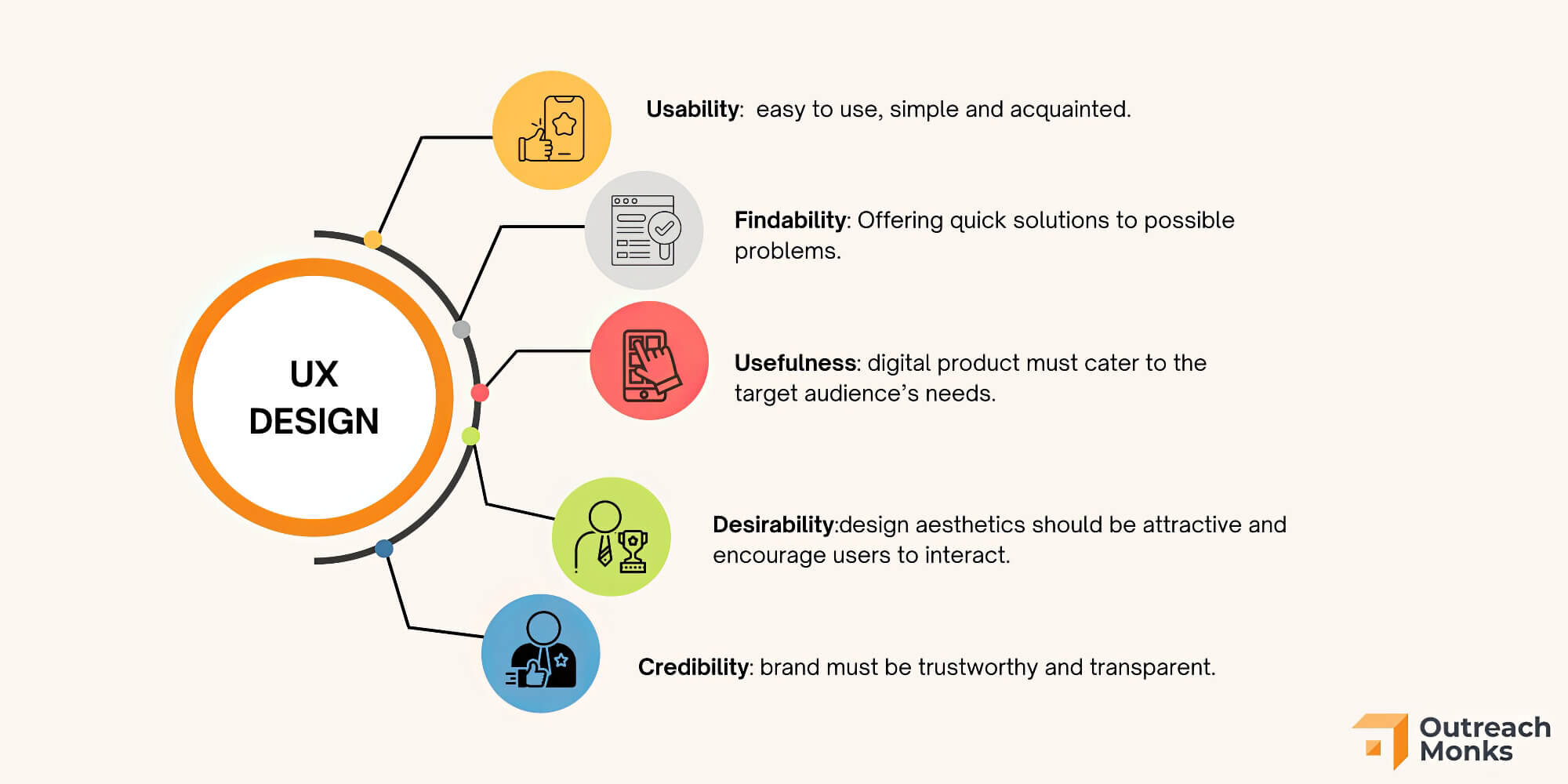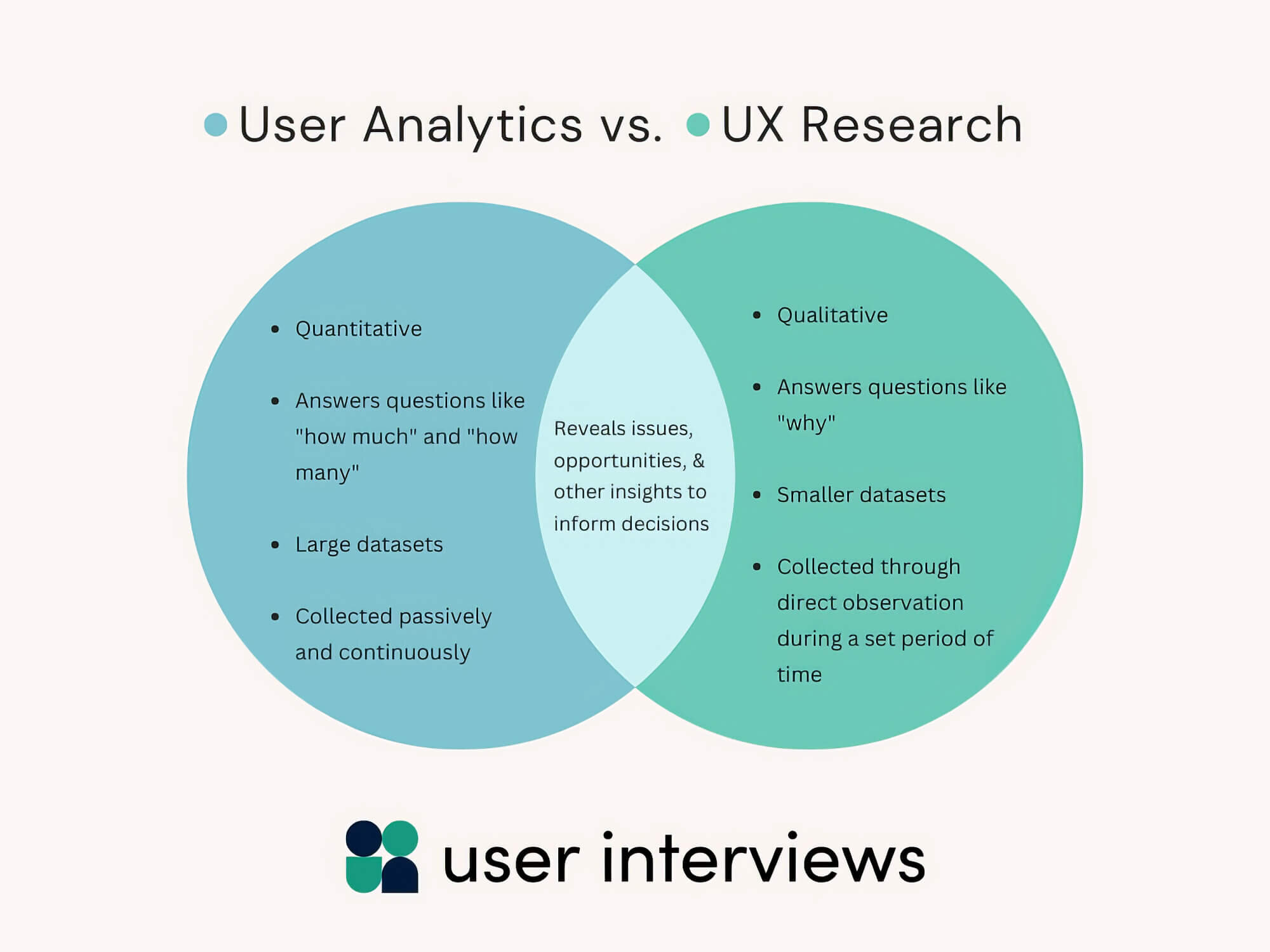Summary / TL;DR
User experience (UX) and search engine optimisation (SEO) are closely linked, as a well-designed, user-friendly website can directly improve search engine rankings. This relationship is driven by Google's algorithm, which prioritises mobile responsiveness, fast page speed, clear navigation, and content relevance. Optimising both UX and SEO involves integrating strategies such as combining team efforts, simplifying navigation, running usability tests, and improving speed and responsiveness for mobile users. Common pitfalls include poor keyword targeting, confusing UI, non-unique content, and lack of analytics. Measuring UX impact through tools like Microsoft Clarity can provide insights into user behaviour, helping refine design and SEO efforts. Overall, balancing usability with algorithm compatibility enhances engagement, dwell time, and long-term website performance.
SEO or search engine optimisation is one of the most critical aspects of digital marketing.
In its simplest form, SEO refers to marketers’ various techniques and strategies to improve a website’s visibility in SERPs or Search Engine Results Pages. Another factor affecting a website’s ranking is the user experience, particularly the relationship between UX SEO design and SEO.
Both UX design and search engine optimisation (SEO) aim to balance user needs and algorithm requirements. This highlights the difference between UX writing and SEO, which function differently, including website design improvements, to help enhance a website’s ranking and reach a broader audience.
This guide breaks down the connection between SEO and UX, showing you how to effectively optimise your site for both areas. By understanding the synergy between these two, you can enhance your site’s performance and user satisfaction. Step into a world where design meets functionality!

What Is UX and SEO? And Why Is It Important?
UX refers to SEO user experience and describes the importance of a person’s experience with a particular product or service. While it is most commonly associated with design elements, it also applies to other aspects, such as the hierarchy of information, that can affect a customer’s experience.
Understanding why UX design is important for SEO and the synergy between UX design SEO and compelling copy is essential.
Besides products and services, these can include the synergy between UX SEO, the staff, customer support, and aspects that ensure a message resonates with users, UX SEO strategies, and business consumers.
For websites, factors that can be included under UX include a list of mobile and desktop layout options, site design and architecture, visitor journey, etc. User Interface (UI) is also one of the components affecting UX and incorporates various design elements like fonts, images, and text fields in SEO UX design and more.
Want to receive updates? Sign up to our newsletter
Each time a new blog is posted, you’ll receive a notification, it’s really that simple.
These days, subscribing to a newsletter on UX and SEO is crucial for businesses, big or small. You can’t just focus on SEO for top rankings anymore—Google’s changed the game. And yes, understanding UX is definitely a key part of digital marketing!
It’s important for SEO and UX design as essential elements utilising artificial intelligence (AI) and machine learning (ML). The search engine now ranks websites higher thanks to a process that focuses on being more mobile-friendly.
Does UX affect SEO? Absolutely. And a good UX for SEO lets Google know that your website provides users with a better experience.

Grasping what your users need makes sure they stick around longer, having a great time on your site. It’s all about making content super easy to access, which can boost your conversion rates and keep everything relevant.
When businesses gear their strategies towards user preferences, focusing on simplicity, they’re more likely to hit their targets and boost revenue. It’s about making purchases easier and more efficient for everyone involved.
Thus, UX can work closely with SEO or Search Engine Optimisation to improve the website ranking.
SEO and user experience are crucial to ensuring your sites maintain high search engine visibility in Google search results and improve SEO. Utilising tools like UX in SEO and an intuitive UX design with SEO best practices can improve website traffic, promote engagement through actionable steps, satisfy user intent, and increase rankings.
How To Optimise Your Website For UX And SEO
Optimising your website to balance UX and SEO can lead to better search engine rankings and boost global web traffic. Check out our tips for maintaining top spots.
1. Integrate Your SEO And UX Strategies
Keeping the UX and SEO teams isolated when working on a website can be counterproductive. Instead, combine your UX and SEO strategies by ensuring both SEO and UX teams communicate continuously.
This will help them proceed with website development, which considers all factors of UX design, including image optimisation and SEO, and can result in improved rankings with actionable user feedback.
2. Simplify Website Navigation
It is another effective method of optimising your website to help users gain insights into what they are searching for. Strategies like internal links help users find information quickly. Use headers, lists, bullets, and images to make information easy to digest.
Similarly, you can use calls-to-action and essential links to enhance the user experience.
3. Run Regular Tests
running regular performance tests is vital for website owners to ensure the site functions correctly and improves performance. Split testing can make it easy to know about changes that benefit the UX the most and are favourable according to search algorithms and website indexing.
This involves creating two website versions and seeing which performs better.
4. Focus On Improving The Speed
site speed is one of the factors search engine algorithms measure, and it depends on various scripts, codes, plugins, themes, and media like JavaScript, videos, and images.
Note that search engine algorithms consider page speed alongside core web vitals to be a critical ranking factor. Hence, web pages with slow page load times lead to an unsatisfactory user experience and higher.

5. Undertake An SEO Audit
An SEO audit with UX analysis can provide information regarding website visitor interaction, covering essential topics. It analyses the website’s SEO performance, allowing you to make improvements.
6. Make Mobile Users A Priority
Search engines like Google recommend a responsive Web Design that provides a good mobile-first user experience on different devices with responsive design. The reason is that many users use mobile devices for their search user queries, which is why search engine crawlers first analyse the mobile version of the website, ensuring optimal user experiences.
You can navigate the streamlined menu, reduce loading times, and eliminate complicated navigation to ensure user experience optimisation for SEO on mobile devices.
7. Keep Your Branding Consistent
Consistent branding is among the essential elements of UX that can be compared in a table of contents, creating a positive first impression on website visitors. It also helps build trust and establish credibility, which can lead to higher levels of engagement.
Another benefit is that it improves brand recognition. Establish guidelines regarding the content’s style, voice, tone, and various design elements to ensure consistent branding.
Also, ensure your logo is present on various digital assets and utilise consistent colour palettes throughout the website.
8. Provide Clear Signals
Learning about making sure the website is the place for clear buttons and calls to action is essential for a positive user experience.
Try to ensure that various UI elements are in locations where they are easily visible and usable, enhancing the website’s overall user experience. Use visuals and visual communication to improve user interaction.
9. Conduct Proper Keyword Research
An effective UX and search engine optimisation strategy allows you to explore proper keyword research to help you understand the search intent of the website visitors. If the website is not optimised properly for the right keywords, it won’t perform well in SEO rankings.
Common Mistakes To Avoid When Improving UX And SEO
Good UX and SEO strategies can significantly enhance user engagement and improve your website’s search rankings, among other critical things. However, the converse is also true, and a poor strategy may prevent the website from ranking on the results page of various search engines.
That is why it is essential to be aware of the common mistakes made by UX designers and SEO experts and how to avoid them.
1. Incorrect Keyword Targeting
A common mistake is targeting the wrong keywords when implementing your SEO strategy.
It is crucial to focus on conversions and what the target customers are searching for, address relevant issues, create a strong content strategy, and show how your products or services can relate to those needs.
In many cases, the products and services may not match the search queries, which is why researching a URL structure becomes crucial for your content. It can help you select relevant keywords that can direct the right traffic to your website and improve your search engine ranking.
2. Poor Website Navigation
As mentioned above, a good UX will provide visitors with the necessary information, including images, that align with search engine requirements, such as where to find specific products and contact information and offer solutions to common questions.
Making website UX navigation difficult for users will reduce traffic and indicate to search engines that the website is not very user-friendly or enhance user satisfaction.
You should ensure a clear call to action to simplify website navigation.

3. Utilising Spam Links
Spam links are those that do not fit the context of your website and are usually employed to get additional links to the website through improper SEO techniques. Utilising such methods is ineffective and can result in the website being penalised by search engine algorithms.
So, check the website links for credibility, address potential issues, and see that they add value and are helpful for website visitors. Consider removing out-of-context links to improve the user experience.
4. Lack Of Analytics
Regular website usability audits provide valuable information regarding how the website performs, enhancing its effectiveness. Readers and analytics can identify areas that require improvement and help you track the website’s progress. Unfortunately, missing out on such analytics is another common mistake by means of designing a website.
You can use ready-made analytics templates, which make it easy to test the website and make the required adjustments.
5. Using Non-Unique Or Low-Quality Content
Search engines love unique, high-quality content. Without it, your site’s performance could take a real hit. Ensuring your content stands out is vital for staying on top.
These engines are constantly improving how they filter online resources, and using content that is already present elsewhere can result in your website getting filtered out and missing key goal opportunities.
Invest time and effort by hand in creating unique and relevant content to prevent that from happening.
Measuring The Impact Of UX On SEO Performance
Improving the user experience can help grow and improve organic traffic on your website. However, to determine how beneficial the UX is for SEO tools, some form of measurement is required to understand how users interact with various menus, buttons, and other UX elements.
Various platforms like Hotjar and Microsoft Clarify allow you to read and track user engagement metrics easily. But before using a UX measurement tool, you should first check whether traffic limits exist, whether data is shared with third parties, and whether you are compliant with CCPA and GDPR.

Using Microsoft Clarity To Measure UX
You can sign up for Clarity, a free service, using a Google, Facebook, or Microsoft account. After signing in, create a new project and add the Clartify tracking code to the web page.
This can be found in the settings, and the code can even be added using platforms like Google Tag Manager.
Clarity can take up to two hours to start gathering data about your website. However, when deciding when to measure the UX, you should consider factors such as the seasonality, effect of marketing campaigns, timeframe and amount of data.
A longer period will result in more data to engage with, providing a more accurate view of how both UX SEO strategies are performing and capturing user attention.
You can look for common errors on the website, such as excessive scrolling, rage clicks, or dead clicks, that should be addressed to enhance access and accessibility for users with disabilities with disabilities.
Exploring the Synergy of UX and SEO
While earlier, there was debate about whether to focus on SEO or UX to improve search engine rankings, the situation has changed now. With Google and other search engines emphasising user experience more, UX and SEO have become complementary.
It is generally accepted that understanding how user experience affects SEO is crucial, as both elements must work together when creating website content.
Providing a good user experience by designing a seamless and easily navigable website that establishes authority, caters to the target audience, and works well on mobile devices while utilising various web design and SEO techniques can help your website rank higher.
You can also examine the competition, gaining insights into what they are doing better to rank higher. You can then customise those strategies and implement them for similar results.
FAQs
1. How can you create a webpage that gives users a better experience?
When creating content, break it into small paragraphs and use proper heading tags. You should also use multiple headings, subheadings, lists, and bullet points. Also, while using images, it is vital to ensure they are lightweight and fit well with the content to meet user expectations.
2. What are some metrics to track for measuring the UX?
Some of the most common metrics that can be used to track user experience include website forms, usability and navigation, time spent on website pages, page views, etc., to ensure the site is user-friendly and serves the overarching purpose of improving UX.
Page load speed is an aspect that should be tracked to enhance the user experience that the UX search engine seeks.
3. Is UX different from website usability?
While UX and usability are often used interchangeably, they are not the same. In discussions of UX vs SEO, it’s clear that UX is much broader than usability since it includes the ease of navigation, how the website appears, and how engaging it is for visitors.
For instance, images may not improve usability but can help improve the user experience.
4. Which is the most prominent SEO element that UX affects?
uX affects SEO significantly, and the UX influences most SEO elements, but user dwell time is the most prominent among them. This is the time a user spends on a page before they return to the search results, and a bad UX can result in a low dwell time.
5. Do UX designers require SEO skills?
While UX designers are not required to possess SEO skills, knowing both fields can be very helpful when developing a website. This raises the question: How is UX Design for SEO part of digital marketing?
It can help design and create content that meets SEO and user experience UX search requirements, ensuring visitors do not leave and delivering a great experience to website visitors.





